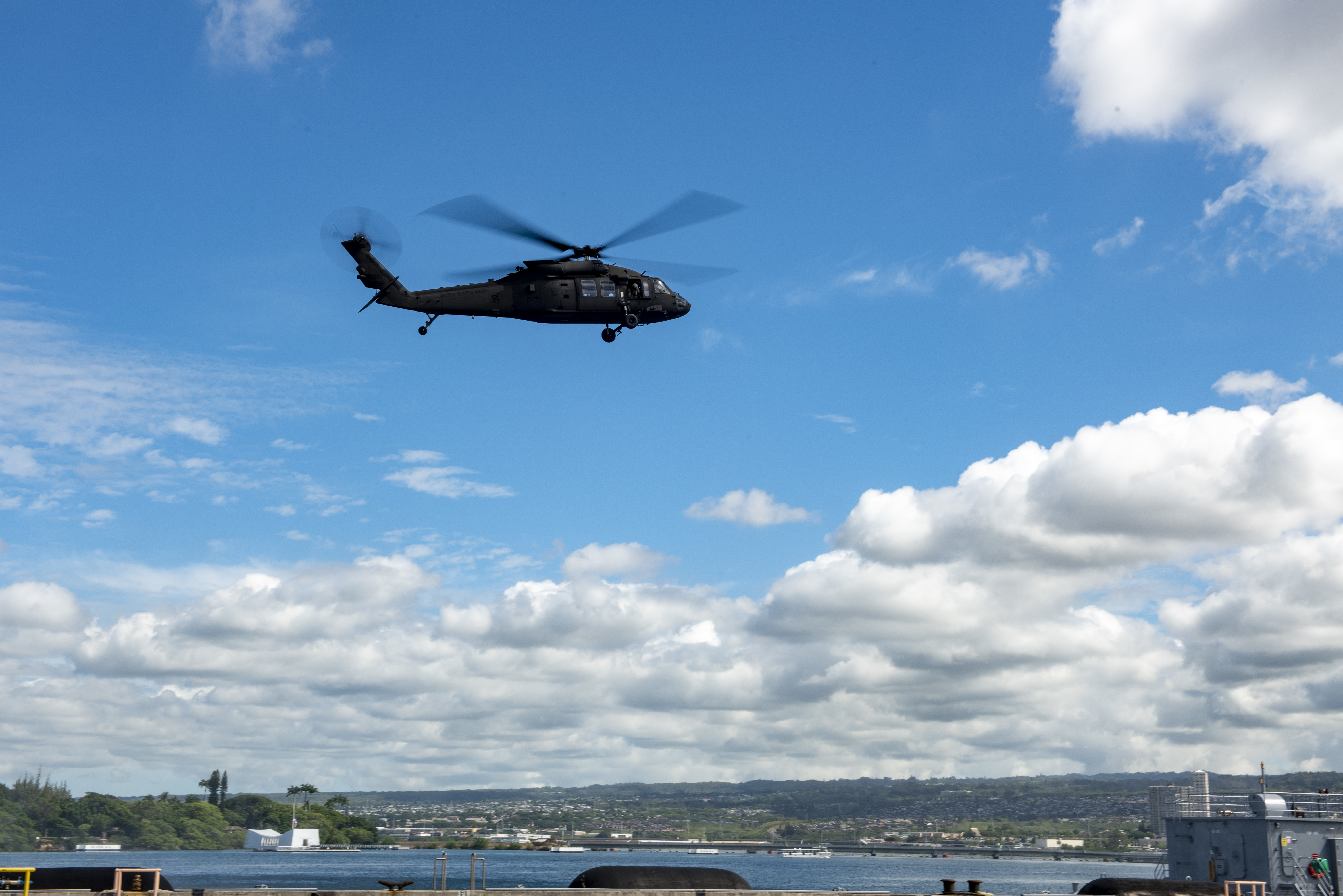
To meet the training needs of warfighters operating in a variety of different environments, the U.S. Army is developing a portable, reconfigurable trainer that can support both aviation and ground systems – and collaboration among them – wherever the personnel are located.

Researchers at GTRI are supporting that effort, providing information about different use cases needed by warfighters and identifying connections to simulation resources available for Army rotorcraft and unmanned aerial systems. GTRI is supporting Program Executive Office (PEO) Aviation with aviation-related platforms in response to a prime contract by Program Executive Officer for Simulation, Training, and Instrumentation (PEO-STRI) to Cole Engineering and Services Inc. with the project.
The Reconfigurable Virtual Collective Trainer (RVCT) will support aviation platforms, ground platforms, dismounted infantry collective maneuver training, collective gunnery training, and mission rehearsal capability. The RVCT will provide a transportable, modular, and scalable training capability using the Common Synthetic Environment (CSE) platform enabler.
“Our team has been modeling the use cases to identify what the needs are, and we pass that information on to the platform teams,” said Eric Grigorian, a GTRI principal research engineer who is principal investigator for the work. “We are also modeling the connections and the interfaces between the platform simulators at Redstone Arsenal and the master simulation in Orlando at PEO-STRI.”
GTRI is currently supporting simulations for the Apache, Chinook, and Black Hawk helicopters, along with unmanned aerial systems (UAS). Existing simulations of the aircraft differ, and the goal of the work is to ensure that they interact properly with the One World Terrain training environment that will be hosted in the cloud.
“The RVCT will allow soldiers to be effectively trained wherever they are deployed,” said Grigorian. “The goal is to create a synthetic, live, virtual training environment that can be adapted to each platform and different mission profiles.”
Because the simulations have important differences, however, getting them to work together is part of the challenge. The Army is tapping GTRI’s familiarity with aviation simulation systems to help build the new system.
“We are helping define what the interfaces are going to be, the behavior, and how the system is going to be impacting the overall reconfigurable trainer,” said Grigorian. “We are helping identify the systems the trainer will talk with and how it will provide information to the soldiers.”
Among the challenges is determining what information needs to be provided for each set of warfighters in each environment. Too much information can be overwhelming, but the system must still support collaboration among the different elements of the air and ground teams.
“The RVCT will be a realistic hardware-in-the-loop system designed to be transportable to where it is needed. For the rotorcraft simulations, for example, it will have appropriate controls – cyclic and collective sticks – and instruments that match the platforms being simulated.
The Army’s CSE is comprised of three foundational capabilities: One World Terrain, Training Management Tool, and Training Simulation Software. The CSE delivers software, application(s), and services that will enable the RVCT. The RVCT architecture and design will enable and support interoperability with the future Next Generation Constructive, Live Training Environment, and other STE and operation capabilities.
Writer: John Toon (john.toon@gtri.gatech.edu)
GTRI Communications
Georgia Tech Research Institute
Atlanta, Georgia USA
MORE 2022 ANNUAL REPORT STORIES
MORE GTRI NEWS STORIES
The Georgia Tech Research Institute (GTRI) is the nonprofit, applied research division of the Georgia Institute of Technology (Georgia Tech). Founded in 1934 as the Engineering Experiment Station, GTRI has grown to more than 2,800 employees supporting eight laboratories in over 20 locations around the country and performing more than $700 million of problem-solving research annually for government and industry. GTRI's renowned researchers combine science, engineering, economics, policy, and technical expertise to solve complex problems for the U.S. federal government, state, and industry.





